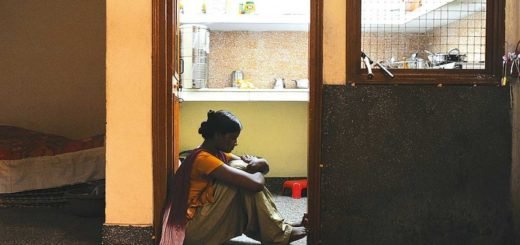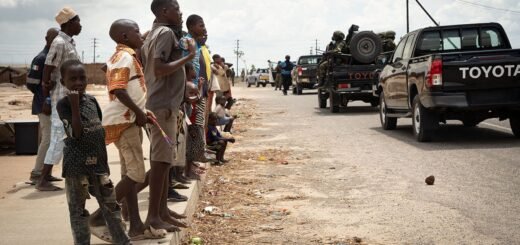The Pink Triangle: Then Symbol of Barbarousness and Today’s PRIDE

In the year 1933-1945 Nazi Germany adopted the extreme form of anti-homosexual repression. During that period, the position of Hitler and the Nazis on the homosexuals went through drastic changes. In the initial year of Third Reich’s ruling, the fate of homosexuals was not studied and part of the public dialogue. However, within the SA (Sturmabteilung also called as Assault Division or Storm Troopers) of Nazi party, there was a presence of ‘open’ gay man – Ernst Roehm. Here ‘open’ represents that the public was not aware of his sexual orientation but everyone within SA inclusive of Hitler knew about him. Ironically, Roehm headed the SA which was an aggressive, radical, all-male and anti-Semitic paramilitary organisation, differing from the right-wing party’s radical and fascists ideology. Nazi tolerated homosexuality to some extent as Hitler maintained “private lives of officers ‘‘can not be an object of scrutiny unless it conflicts with basic principles of National Socialist ideology’’ (Plant, 1986 as cited in Elman). With the presence of Ernst Roehm, the homosexuals in Germany found some hope for the future to express their sexual identity.
The mid of 1934 when the Nazis were transitioning from managing party to country, the SA under Roehm became a problem for Nazis since it became more of a political burden than an asset. Few of prominent reasons were the advent of SS (Schutzstaffel or Protective Echelon) power under the leadership of Homophobic Heinrich Himmler who believed that the homosexuals were the incarnation of degeneracy. Hitler and Himmler perceived them as a threat who are sexually aggressive inferior human beings and unable to control their urges for the younger Aryan men. Also, Hitler considered them as incompetent for his campaigns of racially and culturally purification of Germany wherein he wanted the reproduction of children to foster Aryan race. Eventually, Hitler ordered the killing of Roehm. He got murdered by SS troops where his homosexuality cited as justification.

After this event, Nazi Germany expanded on criminal law section 175 or called as paragraph 175, passed during the unification of Germany in 1871. The paragraph specified that “unnatural indecency” between men to be “punishable by imprisonment“, however, it remained confined within books. In September 1935, Nazis rewrote the paragraph 175 describing it – “as little as a mere kiss or an embrace, or even fiction with homoerotic content’’ was a crime for which the ‘‘criminal’’ was to serve six months (Fernbach, 1980 as cited in Elman). Further, the serving got extended to five years and ten years depending on the degree of “crime” they committed, for instance, indulging into sexual relations with their subordinate employees or having relations with men under the age of 21. After 1936 the homosexual males were either persecuted or transported to the concentration camp just based on their sexual orientation. Besides, paragraph 175 was biased to the gay men while Nazis tolerated lesbians since they did not consider women as a social and political threat. It was because of the preconceived notion that women were inferior and nature depended on men also they had a subordinated role in German society and state. The Nazis attempted to regulate masculine sexual behaviour by the imposition of the utmost degree sanction for male domination purpose. The Nazis dismissed lesbianism as social and state problem because of their ability to perform the role to mother of “Aryan” babies and wives of pure Aryan man. To keep lesbianism at bay, they disengaged women from the institutionalised professional task such as working at the factory and closed homosexual meeting bars and clubs. Still, lesbians were at threat of persecution although a lesser degree as compared to the gay men. Notwithstanding, there is a dearth of evidence, as claimed by historians, on the Lesbians experience in Third Reich’s control.

Between 1935-1945 approximately 100,000 gay men got arrested on the violation of Nazi Germany’s law against homosexuality. Out of which 50,000 were sent to prison and between 5000-15000 sent to a concentration camp. The prisoners in the concentration camp stigmatised with a special symbol that demarcated their justified imprisonment and the nature of their offences. Like Jews were bestowed with Yellow star or star of David, the homosexual male was symbolised with an inverted huge pink triangle on their breast pocket to denote the ‘effeminateness’ in the derogatory sense also designated as ‘175ers’. The concentration camps for the homosexual male was segregated as many believed that their sexual preference is contagious. They got ranked as lowest of low amongst the camp hierarchy of prisoners. In concentration camps, they not only feared the brutality from SS guards but also prejudice from other prisoners. The punishments carried on them were cruel and sadistic, done in front of hundreds of other prisoners with little protection. Several reports have described that gay men got deliberately assigned with the most tedious chores such as in the gravel pit. For instances, in the Dachau concentration camp, they got consigned with the task of pulling street roller. This iron roller weighed five-ton was filled water for the equal levelling of the street or if an inmate made waves with his “effeminate”, “queen” like behaviour, he got the “tree” that his he was hung on the pole with his hand behind. In Hamburg, the pink triangles got allotted with gruelling and dangerous work that is picking up of unexploded bombs after raids. They had to sleep in nightshirts and to hold their hands outside the covers to prevent self-gratification and to assure that several checks held at night. One of the homosexual male prisoners accounted “if anyone caught at night without underwear or hands under the cover, he was taken outside had several buckets of water dumped on them and made to stand that way for many hours. Only a few survived, especially when there was a centimetre of ice on the windowpanes”.
Therefore, to prevent themselves from hard labour or to get extra ration they agreed to become ‘doll boys’. They were ready to trade the mention with sexual favours as demanded by Kapos (prisoners selected by the SS to keep fellow prisoners inline). Furthermore, Nazis resorted to other methods apart from exhaustive labour either to exterminate the homosexual males or “re-education” for them. Since many Nazis believe that homosexuals were not biologically degenerate people, they were the social disease that can be ‘cured’. Heinz Heger, one of the prisoners and “doll boy” in Sachsenhausen and later Flossenebrg concentration camp, described in his memoir The Men With The Pink Triangle 1972 ‘‘those of us in the pink triangle category [could] be ‘cured’ of our homosexual disposition by compulsory regular visits to the brothel”(Elman, 2010). He also told that not all “doll boys” were safe. The SS guards scarred them with brutal physical torture such as “dipping of testicles into hot water or sodomizing them with broomsticks”. Himmler in 1943 issued a decree that if Pink triangles agreed with castration and showed good behaviour they will get freed from camp, however, the hidden motivation was sending them to combat under penal Dirlewanger division that had highest death rate among the other soldiers’ division. In Buchenwald, concentration camp 175ers were injected with high doses of testosterone to ‘convert’ them into the heterosexual person or to discern whether they developed the interest for the opposite sex. An estimate of 65 per cent of gay men died in a concentration camp between 1933-1945.

After the end of World War II with the liberation of many prisoners from concentration camps, the misery of Pink Triangles continued. The Allied Military government of Germany did not repeal paragraph 175 like the other laws and decrees. The Homosexual men were put back into the prison regardless of the time spent in the concentration camp. The acknowledgement as victims of Nazi persecution and reparations were refused. In the 1970s and 1980s, the gay liberation movement gained momentum in America, the awareness increased about the persecution of homosexual during the holocaust and simultaneously books and data of that era got published. In 1973, gay rights organisation – Homosexuelle Aktion Westberlin (HAW)- was established in Germany. It reclaimed the pink triangle as a symbol of liberation. By 1994, Germany repealed the 175 paragraph. In the present time, the pink triangle is the symbol of LGBTQIA+ community that has “mobilized vigilance against contemporary oppression, from queer bashings to antigay initiatives”. The symbol of persecution and torture turned into hope and solidarity.


















